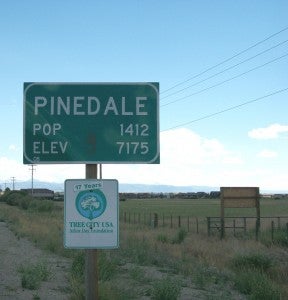Wyoming is already one of the country’s top natural gas producers. And large new developments under review by the
U.S. Bureau of Land Management totaling more than 25,000 new wells in the coming years could further solidify Wyoming’s status as a national energy leader.
But what will this leadership look like? Will this series of development projects lead to worsening air quality or set an example for safe, responsible development?
The first of these, the Continental Divide – Creston Project, is alone one of the largest onshore natural gas developments ever proposed on federal lands in the United States. This enormous development slated for the Wamsutter area of south-central Wyoming, includes drilling nearly 9,000 new natural gas wells across 1,672 square miles (or 1.1 million acres) of public and private lands — an area a bit larger than the state of Rhode Island. The well-known Jonah Field in western Wyoming, by comparison, covers about 21,000 acres and includes about 3,500 wells.
The scale, concentration and vicinity of new wells proposed by the CD-C project are fueling concern for regional air quality issues. If managed improperly, this project could lead to more unhealthy air for local residents and workers.
Unhealthy air, as a result of oil and gas development, has been a particular issue in Pinedale, a community just northwest of the CD-C proposal in Wyoming’s Upper Green River Basin. The past few winters have earned the area unwanted national attention for its U.S. Environmental Protection Agency nonattainment designation for ground-level ozone pollution — one of the first non-urban areas to report such high levels of smog.
Leaks from equipment and other sources of emissions in the nearby oil and gas fields have created California-style smog in rural Wyoming. In recent years, ozone levels in Pinedale (population: around 1400) have at times been higher than the smoggiest days in Los Angeles or Houston.
This is one reason why groups like EDF and the Wyoming Outdoor Council are working with state and federal regulators on commonsense measures to improve regional air quality.
EDF and other groups have submitted comments for the draft environmental impact statement to ensure that BLM fully understands the air quality implications of the CD-C project and that the final proposal contains some of the strongest air emission controls anywhere. Meanwhile in Pinedale, EDF and WOC are advocating for the state to act swiftly on a series of strong actions agreed to by local citizens, industry and environmental groups alike and that are designed to improve the unhealthy air already plaguing the area.
It’s a two-way street. The CD-C project’s proximity to the nonattainment area underlines the need for strong emission controls on any new wells. At the same time, the plans for so many new emissions sources right next door to the Upper Green River Basin make fast action there imperative.
Wyoming has historically been a leader on air quality issues and a national model for holding the oil and gas industry to a high standard. That reputation — and even more importantly, the health of local citizens — is what’s at stake here as these new large-scale developments come to Wyoming.










